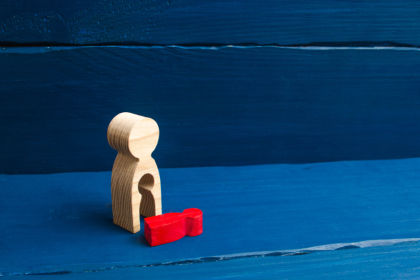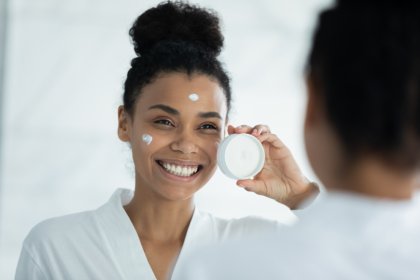Teenagers can be enigmatic creatures. One minute, they’re chatty and seemingly open; the next, they retreat into a world of grunts and monosyllables. Having engaging conversations with a teenager can feel like navigating a minefield. But fear not! Here are some tips for bridging the communication gap and fostering meaningful connections with your teen.
Understanding the Teenage Brain
The teenage brain is undergoing significant development. The prefrontal cortex, responsible for decision-making and impulse control, isn’t fully formed yet. This can lead to emotional volatility and a tendency to prioritize the present moment. Keeping this in mind can help you adjust your communication style.
-
They Crave Independence: Teenagers develop a sense of self and yearn for independence. Respect their need for autonomy while still providing guidance and support.
-
Emotions Can Be Intense: Teenage emotions can be intense and overwhelming. Create a safe space for them to express themselves without judgment.
Finding Common Ground: Conversation Starters
Finding common ground is key to sparking engaging conversations. Here are some conversation starters beyond the dreaded “How was your day?”
-
Talk About Their Passions: Show genuine interest in their hobbies, music taste, or favorite shows. Ask open-ended questions and actively listen to their responses.
-
Current Events: Discuss exciting news articles, social justice issues, or recent movies they might have seen. This can stimulate conversations and encourage critical thinking.
-
Reminisce About Shared Experiences: Look at old photos or revisit vacations together. Reminiscing can spark positive memories and create a sense of connection.
-
Future Aspirations: Chat about their goals, dream careers, or college plans. Offer guidance and support as they explore their options.
Remember: Avoid prying or interrogating. Let the conversation flow naturally, and be patient. Sometimes, simply being present and offering a listening ear is enough.
The Art of Active Listening
Effective communication is a two-way street. Here are some active listening tips to show your teenager you’re genuinely interested in what they have to say:
-
Put Away Distractions: Silence your phone, turn off the TV, and give them your full attention. Make eye contact and show nonverbal cues that you’re engaged.
-
Ask Clarifying Questions: Instead of assuming you understand everything, ask questions to clarify their thoughts and feelings. This shows you’re paying attention and encourages them to elaborate.
-
Validate Their Feelings: Acknowledge their emotions, even if you don’t necessarily agree. Phrases like “That sounds frustrating” or “I understand why you’d feel that way” can go a long way.
-
Avoid Interrupting: Let them finish their thoughts before responding. This shows respect and creates a safe space for open communication.
Remember: Active listening isn’t about waiting for your turn to speak. It’s about truly understanding your teenager’s perspective.
The Power of Positive Communication
Teenagers are sensitive to criticism. Instead of nagging or lecturing, try these positive communication strategies:
-
Focus on “I” Statements: Instead of accusatory “you” statements, use “I” statements to express your concerns. For example, “I feel worried when you stay out late” is more constructive than “You’re so irresponsible!”
-
Offer Choices: Giving teenagers a sense of control can foster cooperation. Offer choices within reasonable boundaries and allow them to make some decisions.
-
Focus on Appreciation: Don’t forget the power of positive reinforcement. Thank them for their help, acknowledge their achievements, and express your love and appreciation.
-
Use Humor: A little humor can go a long way in diffusing tension. Share a funny meme, tell a lighthearted joke, or find humor in everyday situations.
Remember: Positive communication fosters trust and respect, creating a foundation for open and honest conversations.
Building a Foundation for Open Communication
Creating a safe space for open communication is key to having engaging conversations with your teenager. Here are some tips:
-
Respect Their Privacy: Respect their need for privacy while maintaining open communication channels. Knock before entering their room and avoid snooping through their belongings.
-
Lead by Example: Model good communication skills by being a good listener and expressing yourself openly. Show them that communication is a two-way street.
-
Set Aside Regular Time: Dedicate some time each day, even if it’s just 15 minutes, to connect with your teenager. This time can be for talking, sharing a meal, or simply enjoying each other’s company in a relaxed setting.
-
Be Patient and Consistent: Building trust and open communication takes time and consistency. Don’t get discouraged if conversations don’t flow perfectly every time. Be patient and keep creating opportunities for connection.
Remember: Open communication is a gift that benefits both you and your teenager. Putting in the effort and following these tips can strengthen your bond and foster a more fulfilling relationship.
Beyond Words: Nonverbal Communication
Communication isn’t just about words. Our body language and tone of voice can convey a lot. Here’s how nonverbal communication can impact conversations with your teenager:
-
Maintain Eye Contact: Eye contact shows you’re engaged and interested in what they say.
-
Relaxed Body Language: Avoid crossing your arms or looking stern. A comfortable posture conveys openness and approachability.
-
Warm Facial Expressions: Smiling and nodding can encourage teenagers to open up and share more.
-
Respectful Tone of Voice: Even if you’re frustrated, avoid yelling or using a condescending tone. Speak calmly and respectfully.
Remember: Nonverbal communication can make or break a conversation. Be mindful of your body language and tone to create a welcoming environment for open dialogue.
You can turn those teenage grunts into engaging conversations by understanding the adolescent brain, employing active listening and positive communication techniques, and fostering a safe space for open communication. Remember, it’s a journey, not a destination. Be patient, keep putting in the effort, and enjoy the moments of connection with your ever-evolving teenager.
This story was created using AI technology.

















